Medieval History Midterm
1/10
There's no tags or description
Looks like no tags are added yet.
Name | Mastery | Learn | Test | Matching | Spaced |
|---|
No study sessions yet.
11 Terms
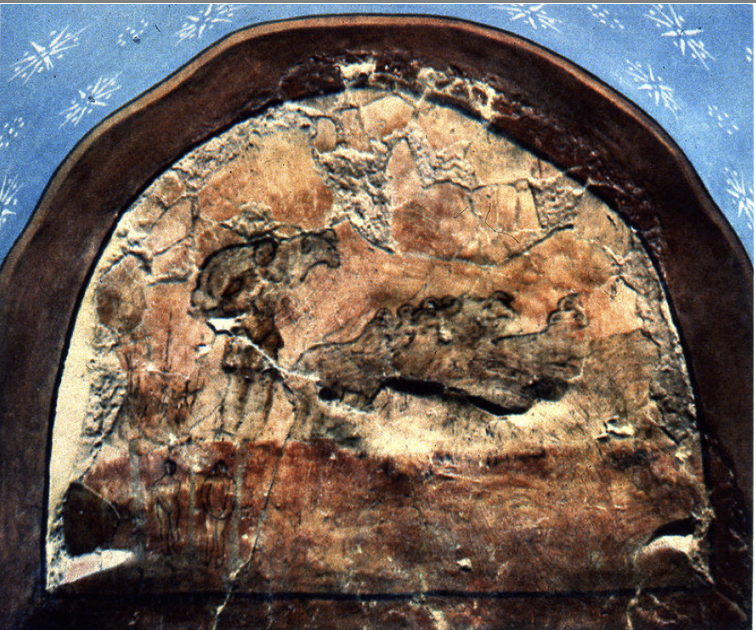
Christ as the Good Shepard
Unknown Commissioner
Before 256
Wall painting
Original Location: Dura-Europus Baptistry, Dura-Europus, Syria.
Current Location: Yale University Art Gallery
Little town in Syria with several religions all respecting each other. Contained a Jewish Synagogue as well as a Christian Baptistry, baptism is cleansing of original sin.
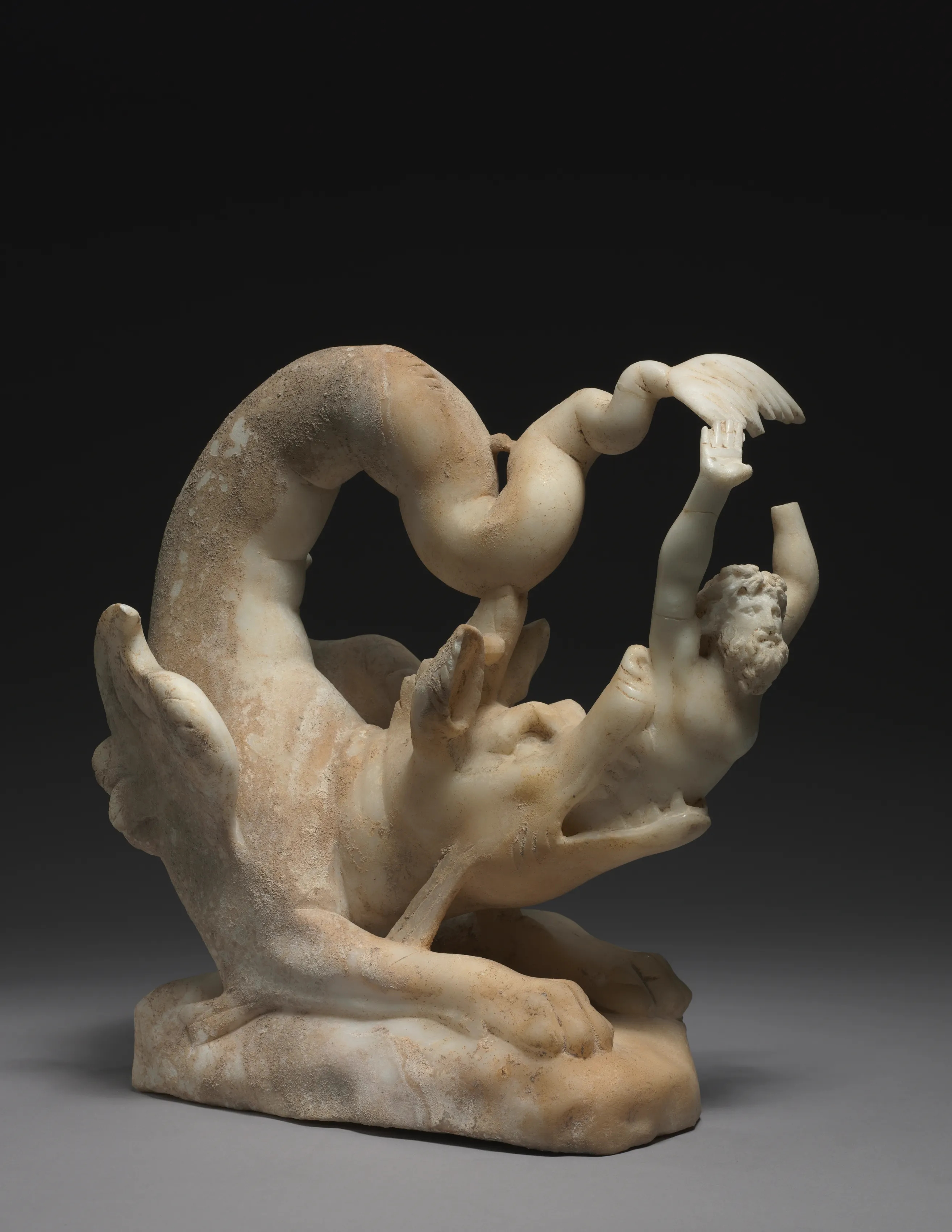
Jonah (Cast Up By) and The Whale
Unknown Patron
Ca. 270-280
Marble
Original Location: Asia Minor.
Current Location: Cleveland Museum of Art
Jonah was swallowed up by a large fish (whale) and God commanded the whale vomit him up, allegory for being swallowed by hell.
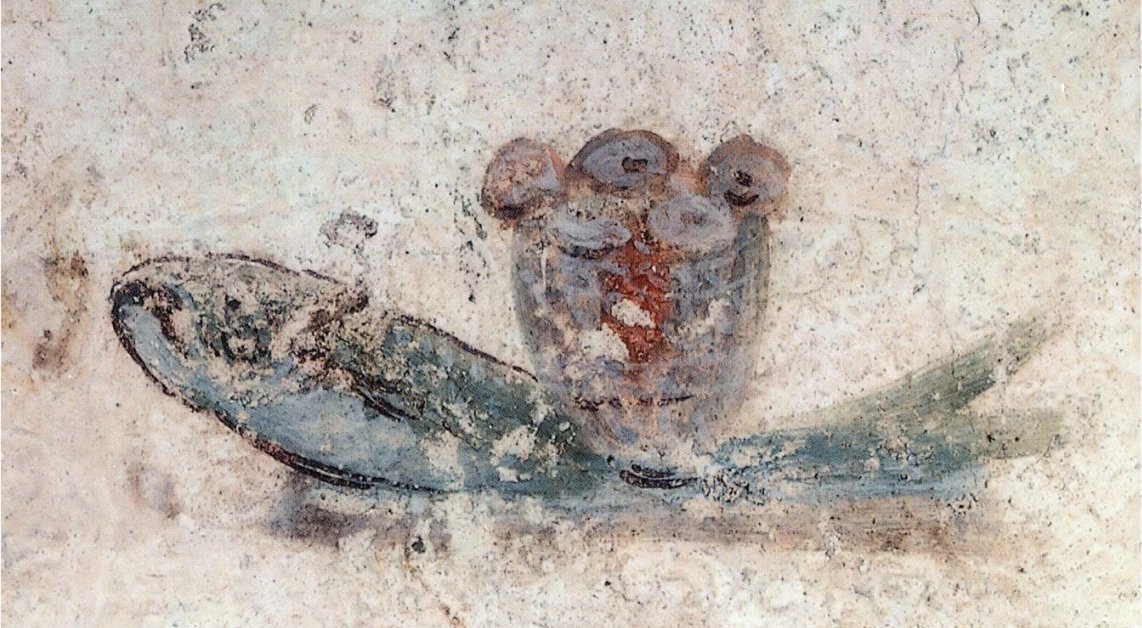
Fish and Bread
Unknown Patron
3rd c.
Wall Painting
Crypt of Lucina, Catacomb of Callixtus, Rome
The depiction of fish and bread are two common symbols in christianity, story about feeding the masses, fish represent the Ichthys (Jesus Christ, the Son of God, Savior acronym in Greek), bread is the body of christ.
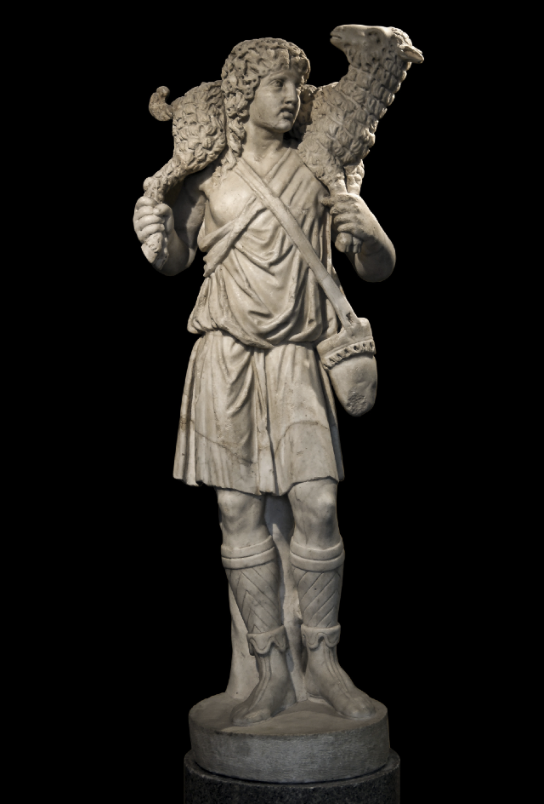
Good Shepard
Unknown Patron
3rd c.
Marble
Vatican, Rome
Christ as the Good Shepard of the people, metaphor for him as a leader. Borrowed from Roman Iconography (Syncretism), original representation of Orpheus or Apollo as a Shepard.
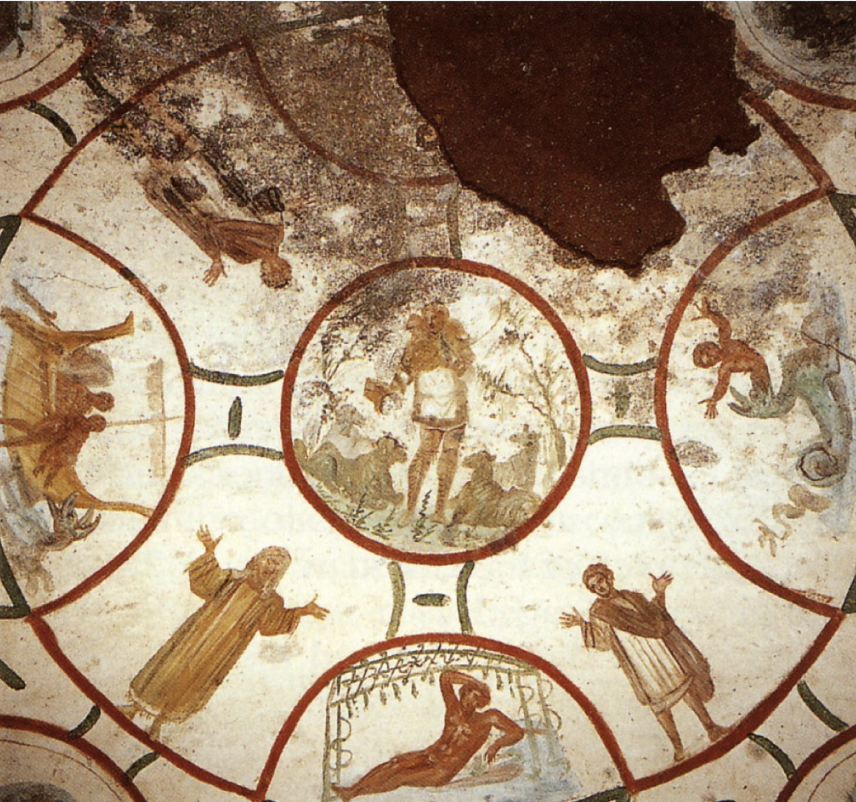
Christ as the Good Shepard and Scenes from Jonah’s Story, and Orans
Unknown Patron
4th c.
Ceiling Painting (Burial Chamber)
Catacomb of St. Peters and Marcellinus, Rome
Once again symbols we’ve seen, Oran figures are those in perpetual prayer. Layout depicts a cross, motifs for the dead—like Jonah they will be saved. Message of salvation/comfort.
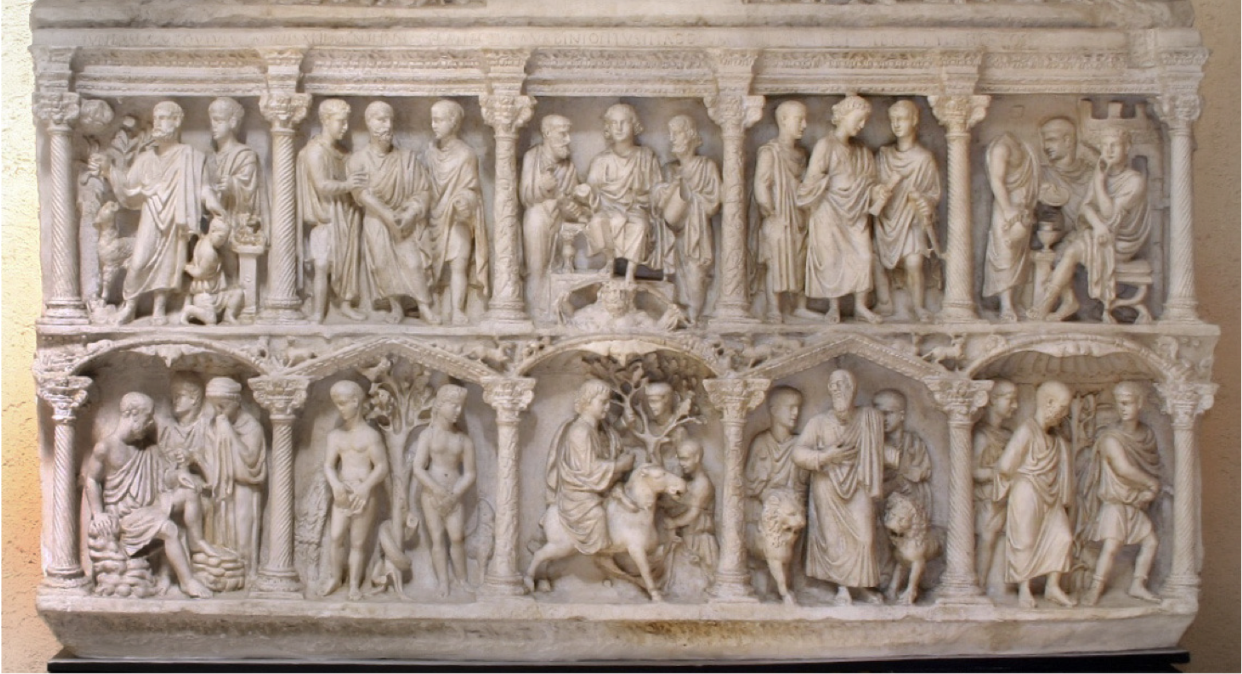
Sarcophagus of Junius Bassus
Junias Bassus
359
Marble
Grottos of St. Peter, Vatican City, Rome
Classical architecture, Christian story, (4 scenes from the old testament and 4 from the new.) Christ displayed like a senator or emperor. Under the scene, Christ entering Jerusalem.
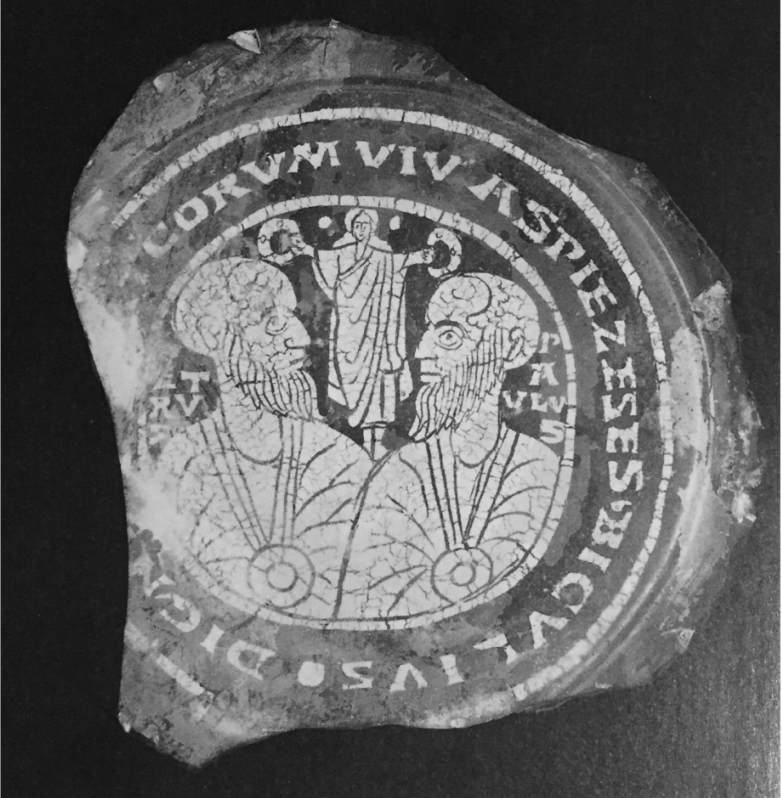
Peter and Paul, Wreathed in Christ
350
Fragment of a bowl
Original Location: unknown
Current Location: British Museum, London
-First pope, upon him Jesus built his Church, St. Peter’s church/Vatican is built upon his tomb.
-Paul never met Jesus in real life. Went blind —> converted to Christianity —> regained vision and started traveling around Turkey, Greece, to spread Christianity. Wrote letters included in the New Testament.
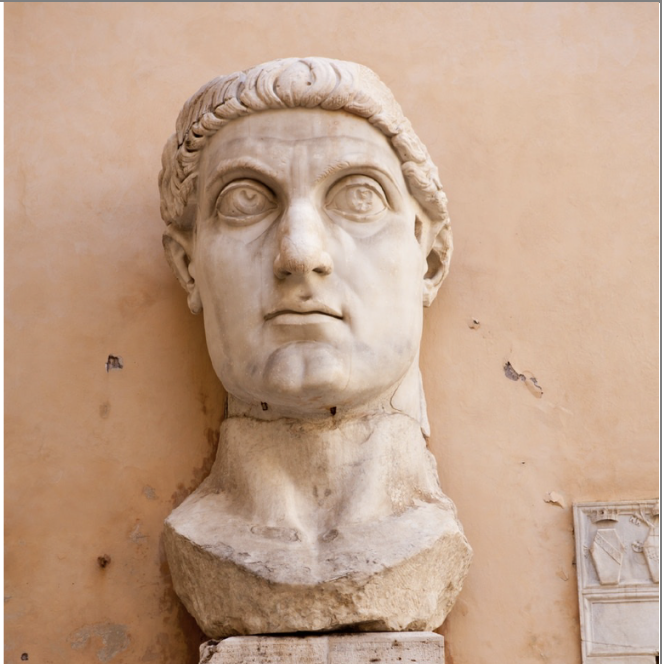
Colossal Head of Constantine
Constantine
ca. 313
Marble
Capitoline Museum, Rome
-Previously in Basilica Nova, public building used by politicians/general public—basilicas were adopted by Christians to build churches.
-Abstraction and Idealized
-Spiritual Gravity and overpowering presence of authority, idealized version of a Christian emperor.
-Anastole Hair, hairstyle typical of Alexander the Great
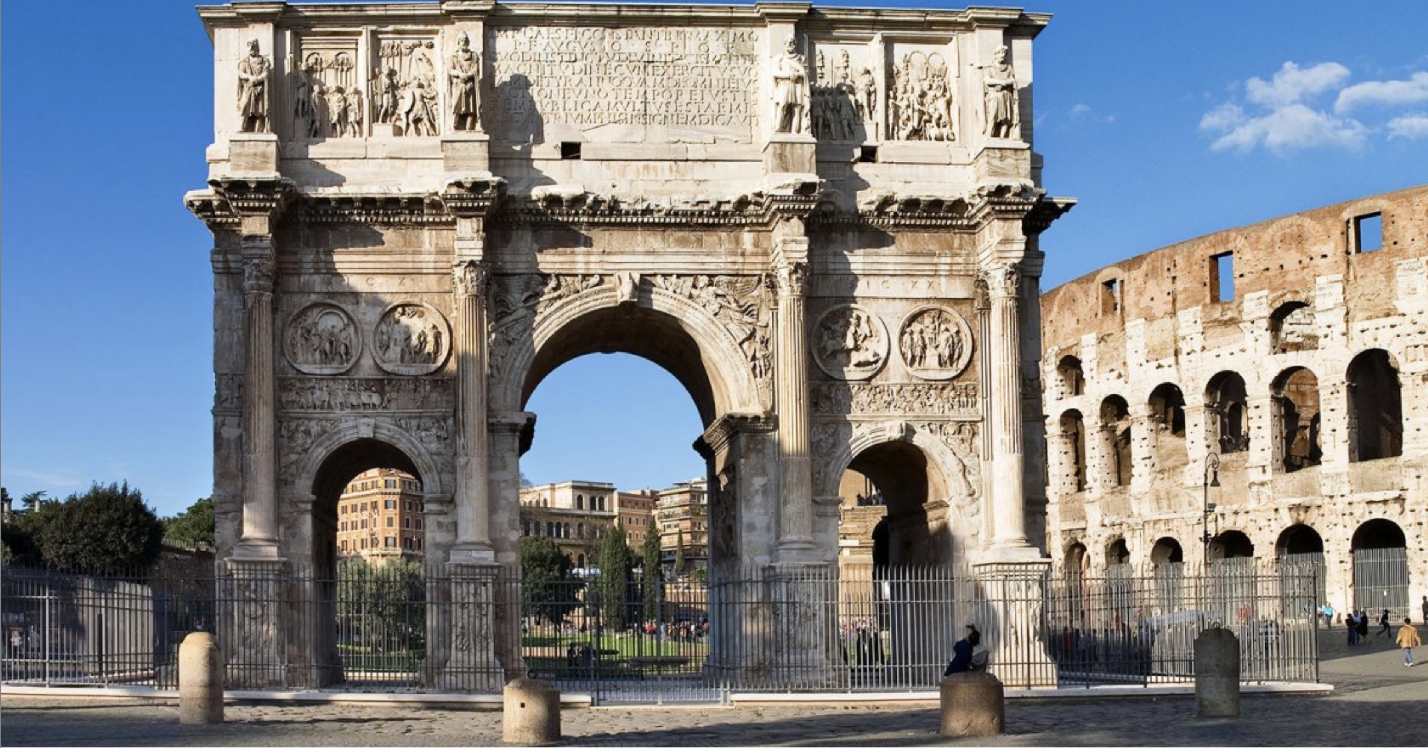
Arch of Constantine
Constantine
312-315
Marble
Rome
-Built next to the Colosseum
-Symbol of his victory, transition between inner and outer city
-Includes Spolia, abandoned and isolated ruins and reuse of them in the Arch of Constantine, as well as contemporary sculpture
-Varietas—Mixture of architectural orders, forms, texture, colors.
-Elements of old imperial monuments and implemented them here, maybe destroyed them to use these pieces?? Cognotive dissonance of time, spoila are now pieces of a bigger whole
-Arch becomes a symbol of Christianity.
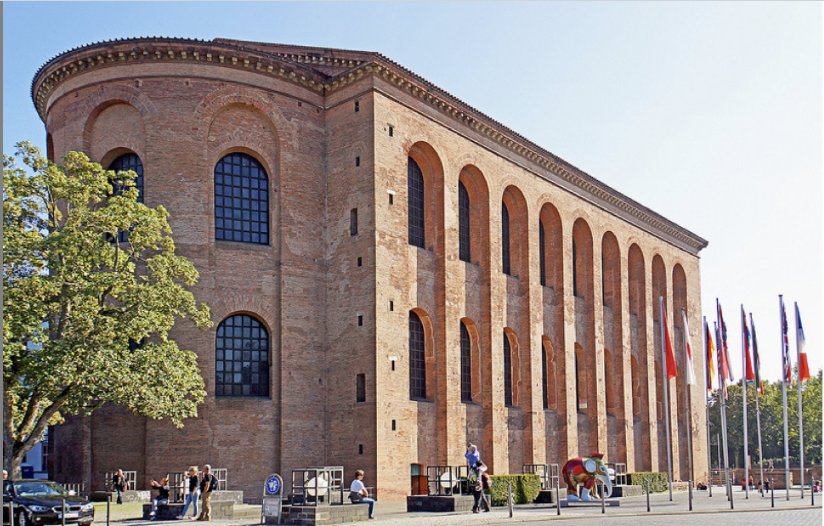
Basilica of Constantine (Aula Palatine)
Constantine
ca. 300
Mixed Media
Trier
-First, meeting hall for commerce, was converted into a church under the reign of Constantine.
-Two levels of windows, roof made of wood, Emperor would’ve sat at the Apse when it was a secular building.
-Light was considered as the presence of God. Inspired from Plato.